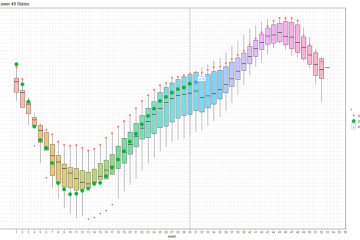Kuwait vs Japan: Cultural and Economic Insights

Introduction
Kuwait and Japan, two nations situated in very different parts of the world, offer fascinating contrasts in culture, economy, and geography. While Kuwait is recognized for its vast oil reserves and desert landscapes, Japan is celebrated for its technology, rich history, and cultural heritage. Understanding the differences and similarities between these two countries can enrich our appreciation for global diversity and international relations.
Cultural Differences
Kuwait, located in the Arabian Peninsula, possesses a cultural landscape predominantly influenced by Islamic traditions and Arabic customs. Its social life revolves around family, hospitality, and community. In contrast, Japan, an island nation in East Asia, boasts a unique blend of traditional and modern culture, highlighted by Shinto and Buddhist practices, along with a strong sense of etiquette and respect for hierarchy.
The arts also differ widely; Kuwait is known for its traditional music, dance, and poetry, while Japan showcases its art through practices like Ikebana (flower arrangement), tea ceremonies, and various forms of theater, including Kabuki and Noh.
Economic Overview
Economically, Kuwait’s prosperity comes largely from its oil industry, being one of the world’s top oil-producing countries. Oil accounts for a significant majority of the country’s revenue and GDP. The government has announced initiatives to diversify the economy by investing in sectors like finance, logistics, and tourism. On the other hand, Japan is the third-largest economy in the world, characterized by a highly developed and technologically advanced infrastructure. It is known for its automotive and electronics industries, with global giants like Toyota and Sony leading the way.
Geographical Features
Kuwait’s geography is primarily flat and arid, with a desert climate that experiences extreme temperatures. The nation is located at the northern edge of the Arabian Gulf, which supports its shipping and trade activities. Conversely, Japan is an archipelago consisting of over 6,800 islands, characterized by mountainous terrains and a temperate climate that varies significantly across its regions. This diversity in geography supports various agriculture and tourism opportunities ranging from skiing in the north to tropical beach areas in the south.
Conclusion
In conclusion, comparing Kuwait and Japan reveals the rich tapestry of human civilization, shaped by geographical, cultural, and economic factors. For readers, understanding these facets can foster a greater awareness of how nations operate today in a globalized world. As both nations continue to evolve, watching their development could offer valuable lessons in resilience, innovation, and cultural pride.









